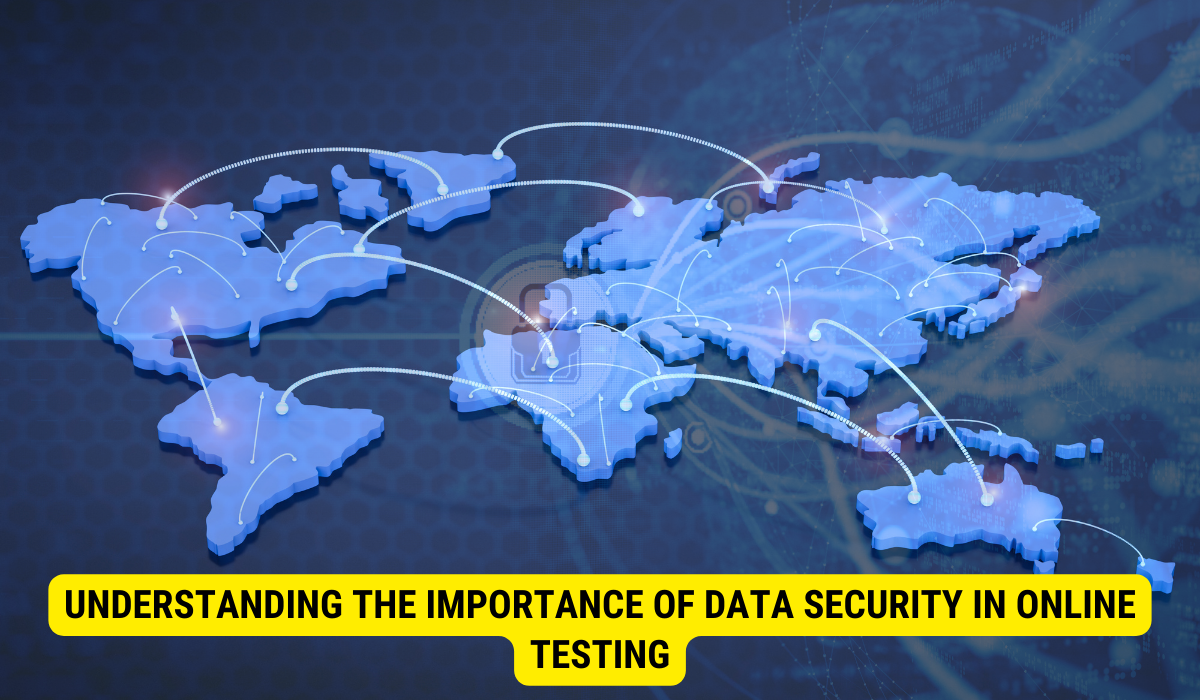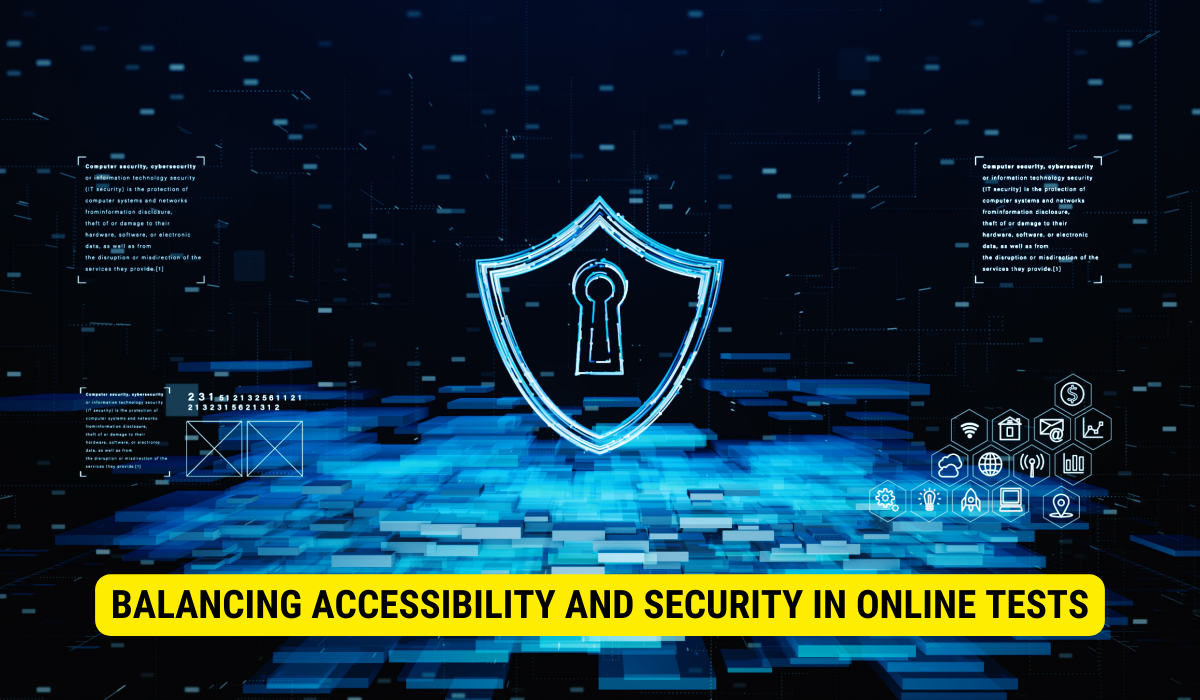Online testing platforms employ various security measures, including encryption, authentication, secure transmission protocols, and proctoring tools, to protect student data and maintain its confidentiality, integrity, and availability.
Online testing has become an integral part of the education system, providing a convenient and efficient way for students to demonstrate their knowledge. However, with the increasing reliance on technology, concerns about data security have also arisen. Protecting student data is paramount to ensure their privacy and safeguard against unauthorized access or misuse. I will explore the various measures and mechanisms online testing employs to protect student data and maintain data security.
Understanding the Importance of Data Security in Online Testing

Online education has witnessed tremendous growth in recent years. With this growth comes the need to address the critical issue of data security. Data security protects sensitive and confidential student information from unauthorized access, alteration, or destruction. Data security ensures that student data is handled responsibly and protected from potential threats in online testing.
When it comes to online testing, data security plays a crucial part in the functioning of educational systems. It ensures that student information, such as personal details, test scores, and academic records, remains secure and confidential. By implementing robust security measures, online testing platforms can foster trust and confidence among students and institutions, encouraging wider adoption of online assessment methods.
But why is data protection crucial in online testing? The answer lies in the information being handled. Student data contains sensitive information about individuals, which, if compromised, can lead to severe consequences such as identity theft, fraud, and misuse. Ensuring data protection in online testing not only safeguards student privacy but also upholds the integrity and reputation of educational institutions.
One of the key aspects of data security in online testing is preventing unauthorized access. Online testing platforms employ various authentication mechanisms, such as passwords, encryption, and multi-factor authentication, to ensure that only authorized individuals can access student data. These measures help to minimize the risk of data breaches and unauthorized use of student information.
In addition to preventing unauthorized access, data security in online testing also involves protecting data during transmission. This is achieved through secure communication protocols, such as HTTPS, which encrypts data between the user’s device and the testing platform’s servers. By encrypting data, online testing platforms ensure the information remains unreadable and inaccessible to unauthorized parties even if intercepted.
Furthermore, online testing platforms employ robust data storage practices to safeguard student information. This includes regular backups, secure storage facilities, and strict access controls. By adopting these strategies, online platforms can reduce the chances of data loss and guarantee the accessibility of student information as and when required.
Another important aspect of data security in online testing is the prevention of data tampering. Online testing platforms use various techniques, such as digital signatures and checksums, to detect unauthorized modifications to student data. These measures help maintain the data’s integrity and ensure that test results and academic records remain accurate and reliable.
Overall, data security is of utmost importance in online testing. It protects sensitive student information and helps to build trust and confidence in online education. By implementing robust security measures, online testing platforms can ensure student data’s privacy, integrity, and availability, enabling a seamless and secure online testing experience.
The Mechanism of Online Testing Security Measures

Online testing platforms employ sophisticated security measures to protect student data. These measures involve using advanced technologies and encryption to stop unauthorized access and maintain data integrity.
Ensuring the security of online testing is paramount in today’s digital age. With the increasing reliance on technology for educational purposes, it is crucial to implement robust security measures that can withstand potential threats.
The Technology Behind Secure Online Testing
Secure online testing relies on various technological components to ensure data security. One such component is secure sockets layer (SSL) encryption, which establishes a secure connection between the student’s device and the testing platform. SSL encryption encrypts the transmitted data, making it unreadable to anyone attempting to intercept it.
SSL encryption functions through a blend of public and private keys. The public key encodes the information, whereas the private key is employed for decryption. This mechanism guarantees that solely the designated recipient, in this instance, the online testing platform, possesses the capability to decipher and access the information.
Furthermore, online testing platforms incorporate robust firewalls and intrusion detection systems to oversee and obstruct any unauthorized access attempts. These systems deliver an additional layer of security by persistently scrutinizing network traffic and pinpointing suspicious activities, thereby fortifying the protection of student data against potential hazards.
Firewalls serve as a protective barrier separating the internal network of the testing platform from the external internet. They evaluate both incoming and outgoing network traffic, permitting exclusively authorized connections while blocking any traffic that appears dubious or potentially detrimental. In contrast, intrusion detection systems actively surveil network activity for any indications of unauthorized entry or malicious conduct. These systems employ signature-based and anomaly detection techniques to recognize and counteract potential threats.
How Encryption Works in Protecting Student Data
Encryption is a fundamental aspect of online testing security. It involves converting plain text data into an unreadable format using cryptographic algorithms. Encrypted data can only be decrypted and understood by authorized parties, ensuring the confidentiality and integrity of student information. Encrypted student data remains protected even if it is intercepted during transmission or stored on servers.
Different encryption algorithms are used in online testing platforms, such as Advanced Encryption Standard (AES) and Rivest-Shamir-Adleman (RSA). These algorithms use complex mathematical calculations to transform the data into a ciphertext, the encrypted form of the original data. The encryption process involves applying mathematical operations, including substitution, permutation, and bitwise operations, to ensure data security.
To decrypt the encrypted data, the authorized recipient uses a decryption key, a unique code that reverses the encryption process. The encrypted data remains unreadable and inaccessible to unauthorized individuals without the decryption key.
By implementing strong encryption algorithms and secure transmission protocols, online testing platforms ensure student data remains confidential and protected. This level of security provides peace of mind to students, parents, and educational institutions, knowing that their sensitive information is safeguarded from potential threats.
Types of Security Measures in Online Testing
Online testing platforms employ multiple security measures to protect student data throughout the testing process.
Authentication and Authorization in Online Testing
Authentication is confirming an operator’s identity before providing access to the testing platform. This verification commonly involves using distinct usernames and passwords, or it can employ more sophisticated techniques like biometric authentication.
On the other hand, authorization pertains to assigning access privileges to authenticated users. Various user roles may possess distinct permissions, guaranteeing that only authorized users can execute particular actions or access specific data.
Secure Browsers and Proctoring Tools
Secure browsers and proctoring tools are integral to maintaining data security during online testing. Secure browsers restrict students’ access to other websites or applications, ensuring they cannot seek external help or cheat during the test. Proctoring tools, such as video monitoring or AI-based behavior analysis, help detect and prevent instances of academic dishonesty.
Challenges in Implementing Security Measures for Online Testing
Despite the significant strides in securing online testing systems, challenges persist in striking the right balance between accessibility and security.
Balancing Accessibility and Security in Online Tests

Online testing platforms must strike a delicate balance between providing an accessible testing experience and robust security measures. Implementing stringent security protocols may inadvertently introduce barriers for certain users, such as those with disabilities or limited technological proficiency. Ensuring inclusivity while maintaining data security remains an ongoing challenge.
Addressing Potential Vulnerabilities in Online Testing Systems
Online testing systems must continuously identify and address potential vulnerabilities. Routine security evaluations, vulnerability assessments, and penetration tests are essential for detecting system vulnerabilities and enabling prompt resolution. Sustained vigilance plays a pivotal role in reducing possible risks and safeguarding the enduring security of student information.
Future Trends in Data Security for Online Testing
As technology continues its relentless advancement, fresh trends and groundbreaking innovations are molding the data security landscape in online testing.
The Role of AI and Machine Learning in Enhancing Security
Artificial intelligence (AI) and machine learning (ML) are revolutionizing data security in online testing. These technologies can analyze patterns, detect anomalies, and identify potential security threats in real time. By leveraging AI and ML, online testing platforms can enhance security mechanisms and respond proactively to emerging risks.
The Impact of Blockchain Technology on Data Security in Online Testing
Blockchain technology offers a decentralized and tamper-proof approach to data security. Using blockchain, online testing platforms can ensure the integrity and immutability of student data. Blockchain-based solutions provide transparent and auditable records, reducing the potential for data manipulation and unauthorized access.
Key Takeaways
- Critical Role of Data Security: Ensuring student data security is paramount in online testing to protect personal details, test scores, and academic records.
- Encryption as a Core Measure: Using algorithms like AES and RSA ensures that student data remains unreadable and protected during transmission and storage.
- Multiple Layers of Security: Online testing employs a combination of authentication, secure browsers, proctoring tools, and continuous monitoring to ensure comprehensive security.
- Ongoing Challenges: Balancing accessibility and security remains challenging, and continuous efforts are required to address potential vulnerabilities in online testing systems.
- The Future is Bright: With technologies like AI, ML, and Blockchain, the future of online testing security is leaning toward more automated, real-time, and tamper-proof measures.
FAQs
Why is data security critical in online testing?
Data security in online testing is essential to safeguard sensitive student information from unauthorized access and potential misuse, ensuring student privacy and upholding the reputation of educational institutions.
How does encryption play a role in online testing?
Encryption transforms plain text data into an unreadable format, ensuring data remains protected even if intercepted.
The encrypted data can only be accessed by authorized parties with the decryption key.
What is the difference between authentication and authorization in online testing?
Authentication verifies a user’s identity, typically using usernames and passwords. At the same time, authorization determines the level of access granted to authenticated users based on their roles.
How do secure browsers and proctoring tools enhance online test security?
Secure browsers restrict access to external websites or apps during a test, and proctoring tools monitor test-takers to detect and prevent cheating or academic dishonesty.
How are emerging technologies like AI and Blockchain impacting online test security?
AI and ML help in real-time anomaly detection and threat identification. At the same time, blockchain ensures data integrity and reduces unauthorized access chances.
Conclusion
In conclusion, data security in online testing is a critical aspect that needs careful consideration. Robust security measures, such as advanced encryption, authentication, and authorization, play a pivotal role in protecting student data. Addressing challenges and embracing emerging technologies will further strengthen data security measures and ensure the integrity of online testing systems. By prioritizing data protection, we can build a secure and trustworthy environment for students to excel in online assessments.
